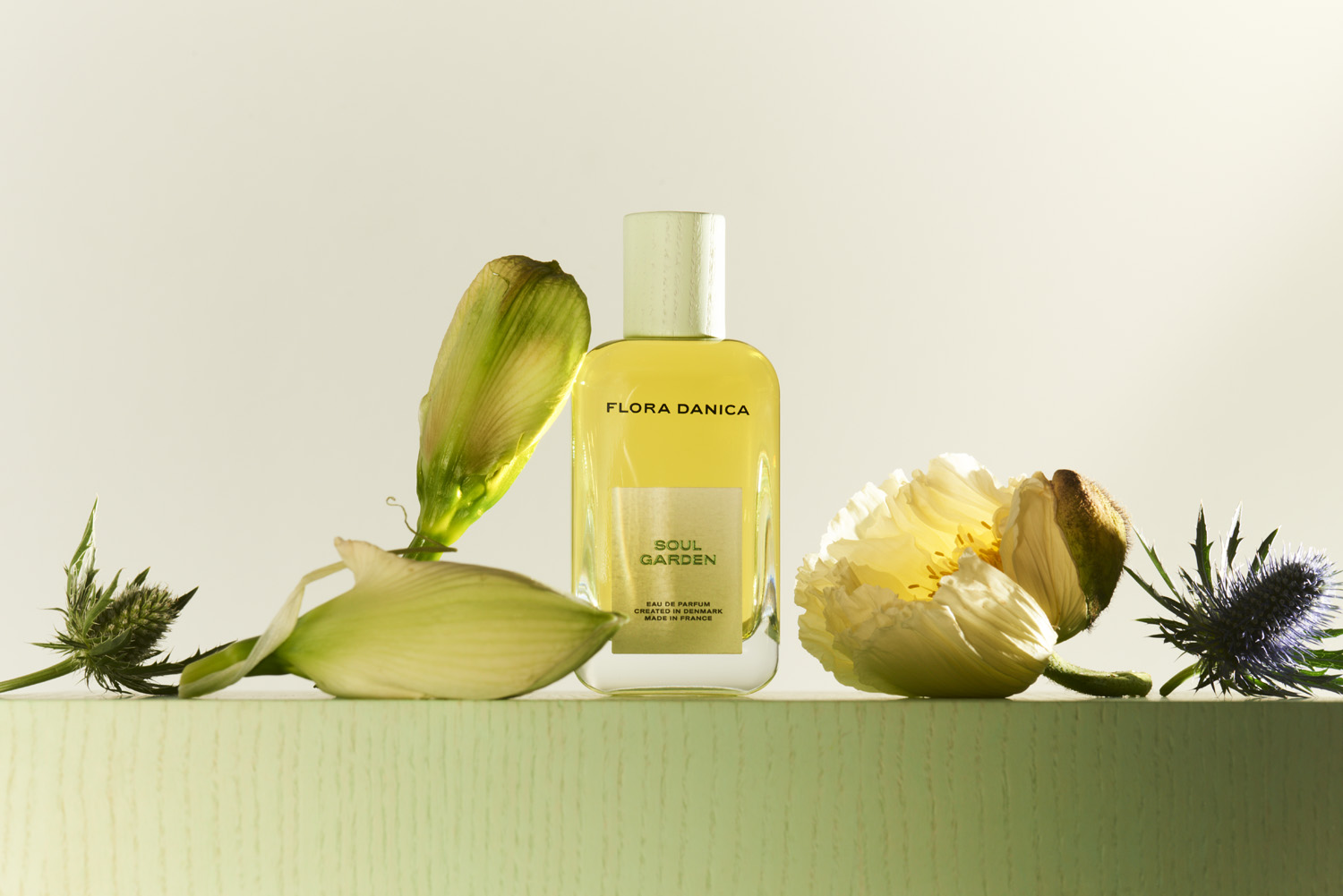
Flora Danica is a new Danish perfume house rooted in the natural world and the Nordic philosophy of hygge. Crafted in Denmark and produced in France, the brand has taken the expertise of three of Europe’s premier noses – Olivier Cresp, Nathalie Lorson and Ilias Ermenidis – to produce a thoughtful debut collection of four scents celebrating a oneness between humanity and nature.
‘In Denmark, we enjoy our nature in its raw and untamed form,’ Michael Shin, Flora Danica’s brand director tells Wallpaper*. ‘The brand’s vision of nature is less romantic, more graphic.’
Flora Danica is a new Danish perfume house rooted in the philosophy of hygge

This outlook is perhaps best exemplified by the scent ‘1761’. Like eating a pastry on a wild walk in a moody, mulchy forest, top notes of citrus and cardamom give way to something much deeper, darker and woodier.
‘Flower Muse’ blends jasmine tea, white poppy, sweet pea and iris, whereas ‘Amber Echo’ brings together ginger, carrot seeds, angelica and frankincense. Finally, ‘Soul Garden’ is an enveloping mix of verbena, honey elderflower and vetiver counterbalanced with an amber gourmand accent.

The house takes its name from an important relic from Denmark’s history, the Flora Danica. This atlas of botany, written between 1761 to 1883, catalogues the diverse flora of the Danish kingdom across 54 illustrated volumes. Certainly, this marriage of history and contemporary Nordic values is a beguiling starting point from which to build a fragrance house.
‘Danish design is about the combination of elevated aesthetics, minimalism and functionality,’ says Shin. ‘We have tried to incorporate this vision, whilst also creating a contemporary identity to a piece of Danish national heritage. It’s about a juxtaposition of modernity with a certain depth and confidence, without being “over the top” or dusty.’

As essential to the Nordic way of life then as it is now, a closeness to nature is at the very heart of the brand, extending from production to branding and beyond. Combining elegant pistachio green as its signature colour with bold sans serif typography – and using organic materials such as paper and wood in its packaging – the house has the characteristics of the inviting yet elevated pragmatism that makes the Scandinavian style so beloved.
‘The choice of four fragrances, just like the four seasons, was conscious,’ Shin notes. ‘We would like to build the brand gradually and had we launched with more creations from the start, it would have meant producing more and using more resources, which we did not want to do.’ Flora Danica perfumes have a high percentage [up to 92%] of ingredients sourced from natural origins. The bottles are refillable and use FSC-sourced paper as a secondary packaging material. ‘We, as Danes, try to make responsible choices when we consume,’ Shin notes.

The process of launching the brand was a journey of discovery, not least for perfumers Crisp, Lorson and Ermenidis, who each brought a unique set of expertise to the brand whilst also taking the opportunity to learn more about Danish cultural identity. But also for Shin, with the Flora Danica encyclopaedia a constant touchpoint throughout. ‘We learnt that the story of Flora Danica is one of generosity, endurance, artistry and courage,’ he says.
‘When King Frederik V commissioned it, he did so to educate his people. It was financed by his personal, not public, budget,’ Shin continues. ‘At the time, the kingdom was much bigger, so researchers had to travel far, often facing dangers, to discover new species. When you look at its illustrations, they depict the flora in its entirety from root to top, not just showing the beautiful parts. To have them printed in colour, not only in black and white, was a remarkable feat of artistry at the time.’
For a tiny country with a population of not quite six million, it’s safe to say that Denmark’s impact on global culture is almost disproportionately immense: we want to dress like the Danes, eat like the Danes and live like the Danes. Copenhagen now rivals Paris or London regarding the city’s aesthetic influence, and also perhaps for its thoughtful way of living; a way of living that Flora Danica has now bottled in its fragrances.







